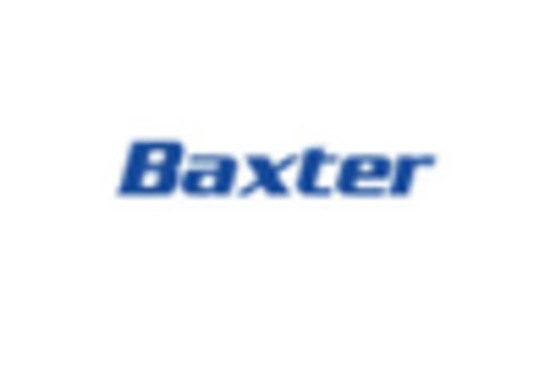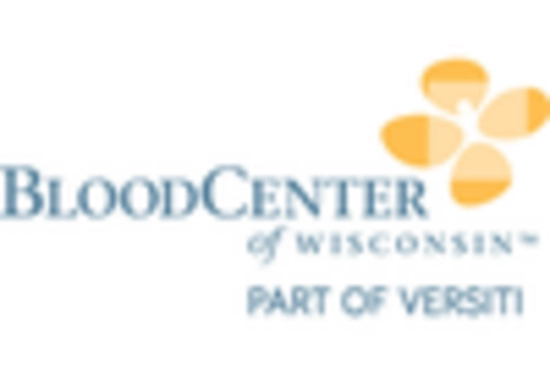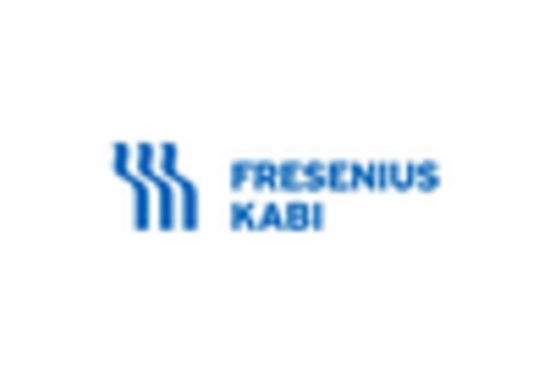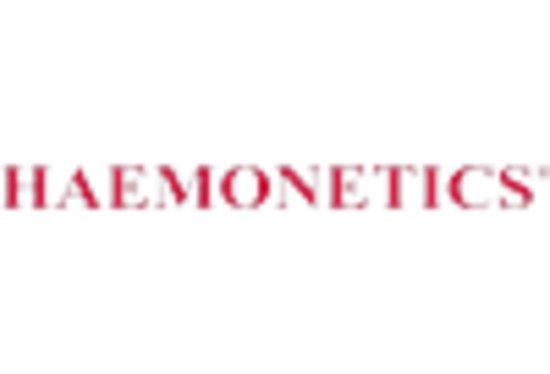Rising Awareness of Blood Donation
The Blood Transfusion Device Market is also benefiting from the increasing awareness of the importance of blood donation. Campaigns aimed at educating the public about the need for blood donations have led to a rise in voluntary blood donations. This heightened awareness not only increases the availability of blood products but also drives the demand for efficient blood transfusion devices. As more individuals participate in blood donation drives, healthcare facilities are compelled to enhance their transfusion capabilities. Consequently, the Blood Transfusion Device Market is likely to see growth as manufacturers respond to the increased supply of blood with advanced devices that ensure safe and effective transfusions.
Increased Demand for Blood Products
The rising demand for blood products is a primary driver of the Blood Transfusion Device Market. Factors such as an aging population, increased prevalence of chronic diseases, and a growing number of surgical procedures contribute to this demand. According to recent estimates, the need for blood transfusions is expected to rise by approximately 5% annually, necessitating the development of more efficient blood transfusion devices. This trend compels manufacturers to innovate and enhance their product offerings to meet the growing needs of healthcare facilities. As a result, the Blood Transfusion Device Market is poised for expansion, with companies focusing on developing devices that can handle larger volumes of blood and improve transfusion safety.
Regulatory Compliance and Standards
Regulatory compliance plays a crucial role in shaping the Blood Transfusion Device Market. Stringent regulations imposed by health authorities ensure that blood transfusion devices meet safety and efficacy standards. Compliance with these regulations not only enhances patient safety but also fosters trust among healthcare providers and patients. The market is influenced by the need for devices that adhere to these regulations, which can lead to increased operational costs for manufacturers. However, companies that successfully navigate these regulatory landscapes may gain a competitive edge, as their products are more likely to be accepted in various healthcare settings. The Blood Transfusion Device Market is thus significantly impacted by the evolving regulatory environment, which continues to prioritize patient safety and quality assurance.
Technological Advancements in Blood Transfusion Devices
The Blood Transfusion Device Market is experiencing a notable transformation due to rapid technological advancements. Innovations such as automated blood collection systems and advanced blood screening technologies are enhancing the efficiency and safety of blood transfusions. For instance, the integration of artificial intelligence in blood management systems is streamlining operations, reducing human error, and improving patient outcomes. Furthermore, the market is projected to grow at a compound annual growth rate of approximately 6.5% over the next few years, driven by these technological improvements. As hospitals and blood banks increasingly adopt these advanced devices, the Blood Transfusion Device Market is likely to witness significant growth, reflecting the ongoing commitment to enhancing healthcare delivery.
Emerging Markets and Healthcare Infrastructure Development
Emerging markets are becoming increasingly important to the Blood Transfusion Device Market. As healthcare infrastructure develops in these regions, there is a growing need for modern blood transfusion devices. Investments in healthcare facilities and the establishment of blood banks are driving demand for advanced transfusion technologies. Additionally, as these markets expand, there is a potential for increased collaboration between local manufacturers and international companies, leading to the introduction of innovative products tailored to specific regional needs. This trend suggests that the Blood Transfusion Device Market will continue to evolve, with emerging markets playing a pivotal role in shaping its future.


















Leave a Comment